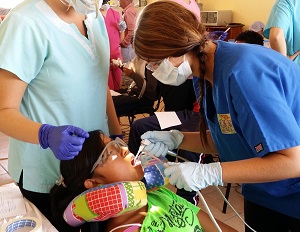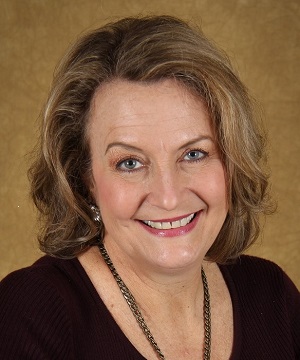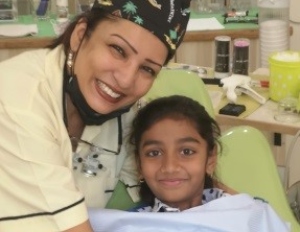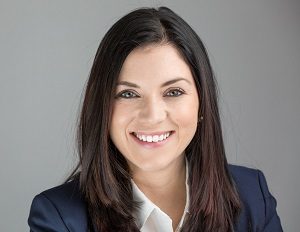by Sherri M Lukes, RDH, MS, FAADH
The villages throughout the desert country of central Mexico are populated by poor villagers with little to no access to dental services. As a dental hygienist/university professor with a passion for mission work, I have had the privilege of serving annually on a team in this area for the past 15 years. Accompanied by eager dental hygiene students we descend on the area for a week, travelling to a different village each day, lugging portable equipment and supplies to provide preventive services from sun up to sun down.
 Though an area entrenched with poverty, the children have no shortage of sugary foods and beverages. One child will present with marked dental fluorosis due to naturally occurring fluoride in the water supply while the next child will present with rampant decay, illustrating the multifactorial nature of dental caries. A substantial portion of the services provided each year include placing sealants on any of the children’s permanent teeth that haven’t already been affected by decay. Dental sealant placement, however, is a very technique sensitive procedure, necessitating a dry field for optimal retention. Indeed, moisture contamination is the most common cause of sealant failure.1 In this setting, not only are we working with anxious and “wiggly” children, the conditions are less than optimal for maintaining a dry field to place sealants. In addition, the dental hygiene students involved in the mission are still learning themselves, and not as adept as experienced clinicians.
Though an area entrenched with poverty, the children have no shortage of sugary foods and beverages. One child will present with marked dental fluorosis due to naturally occurring fluoride in the water supply while the next child will present with rampant decay, illustrating the multifactorial nature of dental caries. A substantial portion of the services provided each year include placing sealants on any of the children’s permanent teeth that haven’t already been affected by decay. Dental sealant placement, however, is a very technique sensitive procedure, necessitating a dry field for optimal retention. Indeed, moisture contamination is the most common cause of sealant failure.1 In this setting, not only are we working with anxious and “wiggly” children, the conditions are less than optimal for maintaining a dry field to place sealants. In addition, the dental hygiene students involved in the mission are still learning themselves, and not as adept as experienced clinicians.
The aforementioned issues have made Embrace sealant material a staple supply for every trip we’ve taken over the past several years. The first of its kind, this pit and fissure sealant material bonds to moist tooth surfaces, eliminating the need for an absolute dry field. Research on the product has shown remarkable sealing ability and adaptation to tooth structure.2,3
I specifically remember one of many days that were met with equipment malfunction during the mission trips. On this particular day the air/water syringe on one of the portable units was not sealed properly and the air flow contained a small amount of water when the stream of air was released from the syringe. Had we not been using a moisture tolerant material, we would have had no way to adequately place sealants on the endless lines of children waiting to be treated that day. What a great product solution for such conditions! I came back to the states and told the Pulpdent representative who served our institution that I would take nothing but Embrace sealant material on subsequent trips.
Any dental professional who has ever practiced in an alternative setting realizes the challenges associated with providing care without the amenities of a fully equipped dental operatory. Mission opportunities are such settings and can test the skills of even the best of practitioners. I am thankful for innovative products that enable me to follow my passion with the assurance that the service I am providing is going to be a lasting benefit to the patients’ oral health.
References
1. Feigal, Robert J. “Sealants and preventive restorations: review of effectiveness and clinical changes for improvement.” Pediatric Dentistry 1998;20: 85-92.
2. Kane B, Karren J, Garcia-Godoy C, Garcia-Godoy F. “Sealant adaptation and penetration into occlusal fissures”. American Journal of Dentistry 2009;22(2):89-91.
3. Strassler HE, O’Donnell JP. “A unique moisture-tolerant, resin-based pit and fissure sealant: clinical technique and research results”. Inside Dentistry 2008;4(9):108-110

About Sherri M Lukes, RDH, MS, FAADH
Speaker, author and public health advocate, Sherri Lukes has been a hygienist for 37 years. Most of her career has been in academia, retiring in 2014 as associate professor from Southern Illinois University where she taught oral pathology, public health and multicultural dental hygiene. Research efforts were concentrated in migrant farmworker oral health, oral pathology, and issues of other underserved populations. Mission work is a passion that was shared with her students for years and she continues to offer the opportunity for students and faculty to participate in bi-annual trips.
As professor emerita, Sherri is fortunate to be able to now integrate years of experience into CE courses to empower dental professionals in the process of care. She offers courses on oral pathology, cultural competence and older adult oral health. She can be reached at [email protected].




